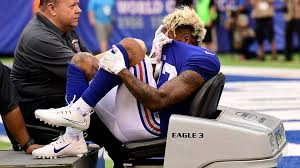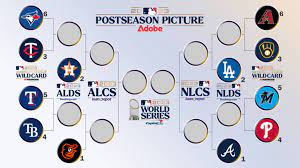Professional Athletes or Professional Patients?
Why are there so many injuries in the NFL?

October 19, 2017
There’s a common saying throughout sports, a phrase echoed and repeated by many: the best ability is availability. For those who don’t watch sports, this may come as a puzzling statement, “How is availability considered an ability, and why was it considered more important than well- known attributes such as speed and strength?” Football, and more specifically, the NFL, is the most physically grueling sport in the world, and remaining healthy throughout a month long preseason and a 16 game regular season, in addition to the post -season, requires the athlete to endure extensive hours of physical training, along with an unbelievable amount of luck. The average career for an NFL player is only 3.3 years, and those who are fortunate enough to remain in the league longer, often endure multiple injuries throughout the remainder of their career. NFL ironmen are few and far between. NFL legends such as Brett Favre and Eli Manning known for their consecutive games played streak is unlikely to ever be touched.
The NFL has seen an increase in reported injuries over the past few decades, in large part due to the fact that players in previous years were afraid to report their injuries, for fear of losing their job. Players under the current collective bargaining agreement (CBA) often have a certain amount of the money in their contract guaranteed to them, which essentially means that even if they are released by their team because of injury, they will receive a payout from their contract. The guarantee clause in the contracts of NFL players has given them more stability, and treatment of injuries has improved exponentially in the past half-century.
Players often spend thousands of dollars to keep their body in top shape, hiring specific trainers and doctors in order to prevent injuries. This leads to a troubling question: Why aren’t these preemptive measures working? It is seemingly impossible to turn on an NFL game on any given Sunday throughout the season, and watch it start to end without seeing a half-dozen players hobble off the field, injured, often gone for substantial amounts of time. Superstar players such as J.J. Watt, Odell Beckham, and David Johnson have all gone down with significant injuries this season, and all are expected to be out for the duration of the 2017 season. In fact, if you take a look at the NFL Injured Reserve Report (designated for players out an extended period of time) you would swear the diverse injuries on the list belong on an “Operation” board game.
These injuries hurt not only the players, but the front offices, executives, and, more broadly, the entirety of the NFL. When superstars like Beckham or Watt get hurt, their teams suffer, as they are often forced to put far inferior players on the field in their place. This negatively impacts the quality of play, making it harder for casual fans to watch and harder for NFL executives to market a game that is being played without the most well-known and arguably most skilled players on the field. This could be a reason why NFL ratings have been consistently falling since the season started. Fans are turning away from an increasingly monotonous games week after week; as a result the NFL has seen its product dwindle. All of this raises a serious question the NFL may need to answer if they wish to see their once untouchable product return to prominence, “Are the descending ratings less of a cause of the oft-discussed political tension, and more to do with lackluster games, the direct result of the escalating amount of debilitating injuries”? Only the fans have the answer.










